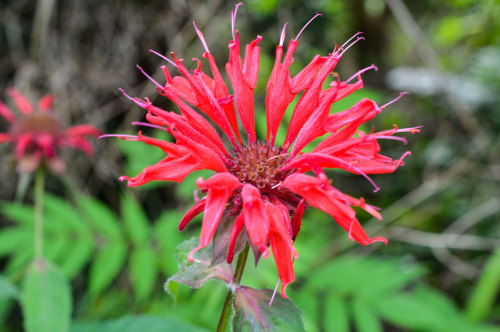A Field of
A Field of HerbsHere’s something you don’t see very often! A whole field full of Echinacea and Wild Bergamot. EchinaceaI have never seen echinacea in the wild before! I see it all the time in people’s yards mostly to add beauty. Although some grow it to make medicine or use it to make a medicinal tea. It is also known as Purple Coneflower or Echinacea Purpurea. Of the many varieties of Echinacea this variety is said to be the most medicinal. It is native to North America, but not Connecticut. The purple Coneflower plant is a hardy plant that usually grows 2 -4 feet and rarely grows up to 6 feet tall. The flower usually grows to be about 3 to 4 inches wide. It has little or no smell. The Root is the most potent part of the plant, but the whole plant can be used. It is recommended to use the flowers and leaves so the plant can continue to grow. What medicine is echinacea used for?Echinacea is an herbal supplements which can be used as treatment for the common cold, herpes simplex infection (topical), immunostimulant, psoriasis (topical), upper respiratory tract infections (viral), urinary tract infections, vaginal yeast infection, skin wounds (topical), and for skin ulcers (topical). Wild Bergamot This is the first time I have ever found Wild Bergamot growing in the wild. Wild Bergamot (Monarda fistulosa) is very similar to regular bergamot (shown in the last 2 pictures) However there are some differences. One of the differences is that the color is always the same dull pastel purple on the wild variety. Where as the regular bergamot comes in many colors including the bright scarlet as shown in the last two pictures. Also the smell is a little different on the wild vs the cultivated varieties. The cultivated seems to be stronger and nicer smelling.Bergamot is also known as Bee Balm, and or Monarda. It is a member of the mint family as you can tell because of the square stem and the smell of the flowers. What can I do with wild bergamot? Leaves, stems and flowers of Wild Bergamot are edible. They can be used as a garnish or in salads raw or cooked. Leaves are used to make tea and as a garnish. But stems, flowers, and leaves can be used as a seasoning herb in soups, stews. Medicinal use of Wild Bergamot: An infusion is used internally in the treatment of colds, catarrh, headaches, gastric disorders, aching kidneys, to reduce low fevers and soothe sore throats. Externally, it is applied as a poultice to skin eruptions, cuts etc and as a wash for sore eyes, and more.All photographs by Gary Cremese. -- source link
#medicinal herbs#culinary herbs#foraging





